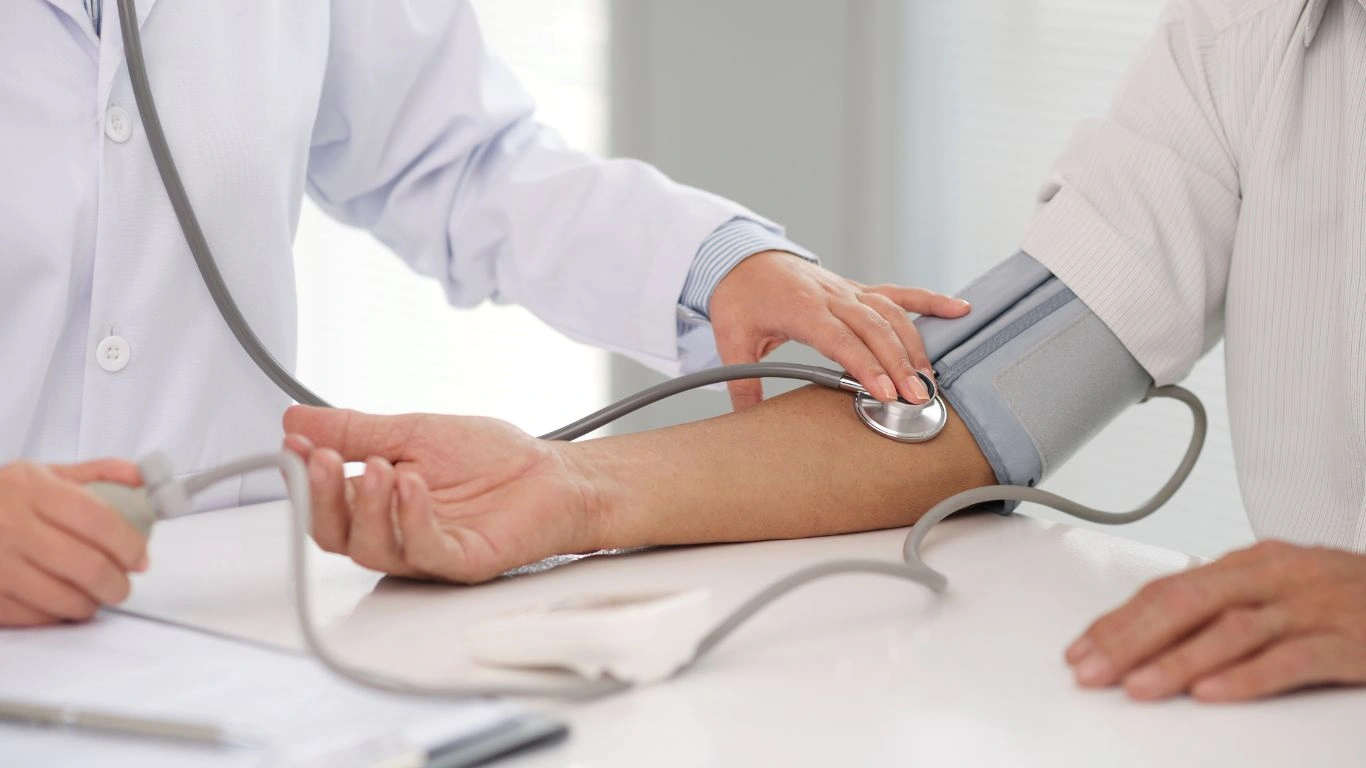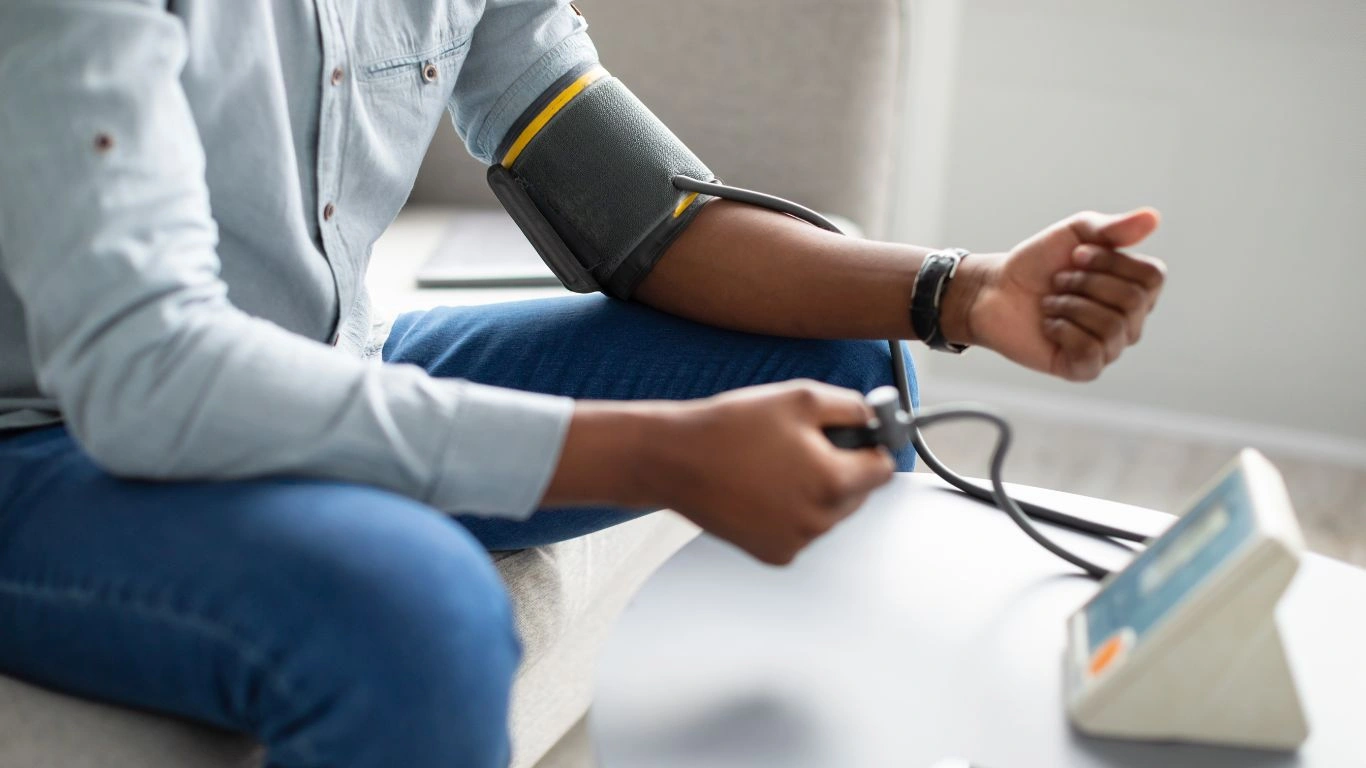Best Meal Timing for Blood Pressure Control: Boost Your Health Now
If you’ve ever wondered whether when you eat matters just as much as what you eat—especially when it comes to managing blood pressure—you’re not alone. As an Internal Medicine physician who’s worked with countless patients struggling with hypertension, I’ve seen firsthand how subtle changes in daily routines, like meal timing, can significantly shift those systolic and diastolic numbers. In fact, I often tell my patients that dialing in the best meal timing for blood pressure control is one of the most overlooked, yet powerful strategies out there.
Why Timing Your Meals Might Be the Missing Piece

Let’s be real—life gets hectic. Between clinic hours, patient charts, and late-night discharges, I used to grab meals whenever I had a spare moment (read: 10 minutes between back-to-back patients). But over time, I started noticing a pattern. On days when I ate late at night or skipped meals, I felt off—sluggish, bloated, and honestly, my own blood pressure readings were creeping up. That got me digging deeper into the evidence behind meal timing and BP control.
The Link Between Circadian Rhythms and Blood Pressure
Blood pressure naturally follows a 24-hour cycle, rising in the morning, peaking in the mid-afternoon, and dropping at night—this pattern is part of our circadian rhythm. So it makes sense that eating out of sync with that rhythm (like having a heavy dinner at 10 PM) can throw your cardiovascular system off balance.
- Morning Meals: Eating earlier in the day helps sync blood pressure with natural hormonal peaks (like cortisol), which can aid better digestion and vascular tone.
- Late Night Eating: Multiple studies now associate it with increased BP variability, insulin resistance, and even endothelial dysfunction.
- Skipping Breakfast: Common among busy folks, but linked to higher chances of hypertension and metabolic syndrome.
Trust me—I get it. Sometimes you’re racing the clock and breakfast feels optional. But when patients come in with uncontrolled BP despite meds, lifestyle, and salt restriction, one of the first tweaks I recommend is looking at when they’re fueling up.
What Science Says About Optimal Meal Timing for Hypertension

So what does the research say? Well, more than you might think. Recent findings from both human and animal studies suggest that aligning meals with your body’s biological clock—what we call chrono-nutrition—can lead to measurable reductions in blood pressure.
Evidence Highlights Worth Knowing
- Early Time-Restricted Feeding (eTRF): This approach, where all meals are consumed between 7 AM and 3 PM, has shown improvements in insulin sensitivity and lowered BP—even without weight loss.
- Late-Night Snacking: Just say no. Research consistently links it to increased sympathetic nervous system activity—basically, your body stays in “fight or flight” mode instead of winding down for rest.
- Consistent Meal Timing: Eating meals at regular intervals each day helps stabilize glucose and blood pressure levels—especially important in folks with co-existing diabetes or metabolic syndrome.
One of my patients—a 62-year-old man with a long history of stage 2 hypertension—was doing “everything right” with diet and exercise. But he admitted to routinely having dinner around 10 PM. We shifted his meal window earlier, and within six weeks, his home BP readings improved dramatically. It wasn’t magic—it was metabolic alignment.
How Your Eating Window Impacts Blood Pressure Meds

Here’s something I wish more people considered: your meal timing might even influence how well your blood pressure medications work. That’s right. The absorption and efficacy of some antihypertensives can be affected by food intake—especially beta-blockers and ACE inhibitors. Some require consistent intake with or without food; others work better taken at night, depending on BP patterns.
Timing meals to avoid interference with meds is something I always walk through with my patients. A quick tip I often give:
- For once-daily meds: Consider taking them at bedtime if approved by your doctor. It aligns with nocturnal BP patterns and can improve morning readings.
- For meds with food restrictions: Create a predictable eating schedule so you’re not skipping doses or taking them at random times.
Bottom line? Consistency beats chaos. Your blood vessels will thank you.
My Takeaway from the Clinic
As someone who lives in the real world with packed days and unpredictable hours, I totally understand how hard it is to stick to ideal meal times. But I’ve also seen the kind of blood pressure control that’s possible when patients shift from chaotic, late-night meals to earlier, structured eating patterns. The body craves rhythm—and honoring that can be more powerful than we give it credit for.
In the next section, we’ll dive into practical strategies, meal timing schedules, and how cultural eating habits play into the picture. For now, just know this: the best meal timing for blood pressure control isn’t a gimmick—it’s a game-changer backed by science, experience, and a bit of common sense.
Simple Meal Timing Strategies You Can Actually Stick With

If the idea of “time-restricted eating” sounds like another wellness trend destined for your mental junk drawer, don’t worry. I’m not here to pitch anything rigid or overwhelming. Instead, let’s talk about realistic ways to adjust your eating schedule—ways that work in real life, with real jobs, real kids, and real exhaustion.
One thing I’ve learned in practice: the simpler the strategy, the more likely people are to stick with it. So here are a few low-stress tips I give my own patients when we’re trying to dial in the best meal timing for blood pressure control.
1. Front-load Your Day
This doesn’t mean eating like a lumberjack at 6 AM. It just means shifting more of your calories and nutrients to earlier in the day. Your body metabolizes food more efficiently in the morning—think better insulin response, less post-meal BP elevation, and smoother digestion overall.
- Try to eat breakfast within 60-90 minutes of waking up.
- Make lunch your biggest meal, not dinner.
- Think “fuel first, light later” instead of the traditional heavy evening feast.
One of my patients, a retired school teacher, used to skip breakfast altogether and load up at dinner. After switching to a big mid-day meal and lighter evening snack, her systolic BP dropped by 10 points—without adding another pill.
2. Create a Consistent Eating Window
Our bodies thrive on rhythm. That means trying to eat meals around the same time every day. Skipping meals or eating erratically keeps your blood pressure bouncing around like a ping pong ball.
Consistency helps regulate everything from gut hormones to sympathetic tone (the part of your nervous system that revs things up). That steadiness can bring big improvements in BP control—especially in people whose readings tend to spike unexpectedly.
Cultural Patterns and Meal Timing: What We Can Learn

It’s always fascinating to look at how different cultures approach meal timing. Some traditional practices actually align beautifully with modern metabolic science, even if they didn’t have the research to back it up at the time.
- In Mediterranean regions: The largest meal is often mid-day, followed by a lighter evening snack. This pattern supports better glycemic and BP control.
- In parts of Asia: There’s an emphasis on early, balanced meals and less late-night eating. Again, this lines up with circadian health principles.
- In Western countries: The trend has been toward skipping breakfast and having heavy, late-night dinners—exactly the kind of pattern that tends to worsen hypertension.
I always encourage patients to reflect on their family’s or community’s traditional eating habits. You might find that the wisdom of your grandmother’s kitchen actually aligns quite well with what your arteries need today.
Modern Life Makes it Hard—but Not Impossible
Let’s be honest: we live in a culture that doesn’t make early dinners easy. Between evening meetings, sports practice, and commuting, most people end up eating dinner way too late. I totally get it—I’ve scarfed down many a salad at 9:30 PM after back-to-back discharges and notes.
But the key is to shift slowly. Start by pushing your last bite 30 minutes earlier. Then another 30. Over time, your body adjusts and even starts to feel better—less bloated, more restful sleep, fewer 3 AM wakeups with a pounding heart.
Meal Timing for Different Blood Pressure Patterns

One thing that often gets overlooked: not everyone has the same type of hypertension. Some people spike in the morning, others in the evening. Some are “non-dippers,” meaning their BP doesn’t fall at night like it’s supposed to.
Meal timing can be tailored to support different patterns:
- For morning spikes: Consider taking your BP meds at bedtime and avoid very salty breakfasts (no more bacon + toast combos).
- For evening spikes: Try to finish dinner by 7 PM and avoid caffeine after 3 PM.
- For non-dippers: Align meals and meds to promote nighttime dipping—often means no heavy evening food, especially carbs or alcohol.
It’s not just about food—it’s about timing food with your body’s rhythms and your medication regimen. That’s why it’s so important to individualize care, which is exactly what I try to do in clinic every day.
Real Talk: How to Know It’s Working
So how do you know if meal timing changes are helping? Start with a home BP log. Track your numbers consistently—ideally morning and evening—for at least 2-3 weeks. Look for trends.
Here’s what I tell patients:
- If your evening readings are dropping, your earlier dinner is probably helping.
- If your morning spikes are calming down, consistent bedtime meds + no late-night snacking may be playing a role.
- If your overall BP is more stable, you’re likely syncing better with your circadian rhythm.
Sometimes I even have folks wear ambulatory BP monitors for 24 hours so we can see the impact of their meal schedule in real time. It’s amazing how often a late dinner or skipped lunch correlates directly with a BP surge.
A Personal Note From the Clinic
I’ve had patients tell me they feel like their body is finally “getting into a groove” after changing their eating schedule. One woman even said her sleep was better, her mood improved, and she didn’t feel the mid-afternoon crash anymore.
It’s not about perfection—it’s about creating a rhythm your body can rely on. And that rhythm? It’s one of the most powerful tools we have in the toolbox for controlling high blood pressure, no matter your age or background.
Practical Meal Timing Templates to Support Blood Pressure Control

By now, I hope you have a clear understanding of why meal timing is such an important factor in controlling blood pressure. But I know you might be thinking, “How do I make this actually work in my life?” Well, don’t worry—I’m here to help you figure that out with some simple, realistic meal timing templates that you can easily adapt to your daily routine.
1. The “Early Bird” Strategy
If you’re someone who’s prone to morning spikes in blood pressure, this strategy might be a game-changer. It’s based on the principle of eating early and focusing on a nutrient-dense, high-protein breakfast to kickstart your metabolism and avoid excessive cortisol release (which can spike BP). A light, balanced dinner ensures that you’re not going to bed with a full stomach, which can disrupt your sleep and cause higher nighttime readings.
- 7:00 AM:Breakfast with protein, healthy fats, and complex carbs (think eggs with avocado and whole-grain toast).
- 12:00 PM:A balanced lunch with lean protein (like chicken or fish), veggies, and a small portion of healthy grains.
- 5:00 PM:A light dinner (vegetable stir-fry with tofu or grilled fish) with a focus on fiber-rich veggies.
- 7:30 PM:Optional light snack if needed—nuts, yogurt, or a piece of fruit.
By eating early and making your main meal lunch, you help your body process nutrients during the day when it’s most metabolically active. You also avoid heavy meals right before bed, which can lead to nighttime BP elevation.
2. The “Balanced Window” Approach
If you prefer a little more flexibility, this approach might suit you. It focuses on spreading out your meals evenly throughout the day while still adhering to consistent meal times. The key here is balance—ensuring your meals contain a healthy mix of protein, fat, and carbs to maintain stable blood pressure throughout the day.
- 8:00 AM:Breakfast with protein and fiber (e.g., oatmeal with nuts, seeds, and a protein source like Greek yogurt).
- 12:30 PM:Lunch with lean protein, healthy fats, and plenty of veggies (e.g., quinoa salad with grilled chicken, avocado, and mixed greens).
- 4:30 PM:Light snack to prevent overeating later in the evening (e.g., a handful of almonds or a small apple).
- 7:00 PM:Dinner that’s lighter on carbs but includes protein and vegetables (e.g., baked salmon with roasted vegetables).
This pattern works well for people who are active during the day and prefer a later dinner without affecting their sleep or blood pressure. It’s all about finding that sweet spot of timing and balance.
Addressing Common Roadblocks: How to Stay Consistent

We all know that consistency is the key to any lifestyle change, but it can be tough to stick to a new meal schedule. Between work, family obligations, and social events, it’s easy to fall off track. But don’t worry, I’ve got a few tips to help you stay on course without feeling overwhelmed.
1. Meal Prep Is Your Best Friend
If your schedule is chaotic, meal prep can save you. Spend an hour or two on the weekend preparing meals in advance so you don’t have to think twice about eating on time during the week. Having grab-and-go options in the fridge helps ensure you’re sticking to your meal timing without the temptation of fast food or skipping meals.
For example, I suggest preparing lunch and dinner in bulk. A big batch of roasted vegetables, a grain like quinoa, and a lean protein like chicken or tofu can keep you going for several days, reducing the stress of meal planning on busy weekdays.
2. Find Support
Sometimes it’s easier to stay on track when you have accountability. Whether it’s a family member, friend, or even your physician, sharing your meal timing goals with someone else can help keep you motivated. In my practice, I’ve found that patients who involve a support system—whether through meal prep partners or sharing progress updates—tend to be more successful in making lasting changes.
3. Be Kind to Yourself
Let’s get real: you’re going to have days where life gets in the way. A late meeting, a family dinner, or unexpected travel can throw off your carefully planned meal schedule. And that’s OK. The key is to get back on track as soon as you can. Don’t let a “slip-up” turn into a reason to abandon your efforts altogether.
Consistency doesn’t mean perfection—it means trying your best and making adjustments when necessary. Small changes over time can lead to big results, so even if you’re off track for a day or two, don’t give up.
References
- National Institutes of Health – Trusted resource for the latest hypertension research and guidelines.
- Health.com – Offers practical advice on managing blood pressure through lifestyle changes.
- Centers for Disease Control and Prevention – Provides up-to-date information on hypertension and heart health.
Disclaimer
The information provided in this article is for informational purposes only and is not intended as medical advice. Consult with your healthcare provider before making any significant changes to your diet, medication, or lifestyle. Blood pressure management is highly individualized, and what works for one person may not work for another. Always prioritize professional medical guidance.

Dr. Gwenna Aazee is a board-certified Internal Medicine Physician with a special focus on hypertension management, chronic disease prevention, and patient education. With years of experience in both clinical practice and medical writing, she’s passionate about turning evidence-based medicine into accessible, actionable advice. Through her work at Healthusias.com, Dr. Aazee empowers readers to take charge of their health with confidence and clarity. Off the clock, she enjoys deep dives into nutrition research, long walks with her rescue pup, and simplifying medical jargon one article at a time.






